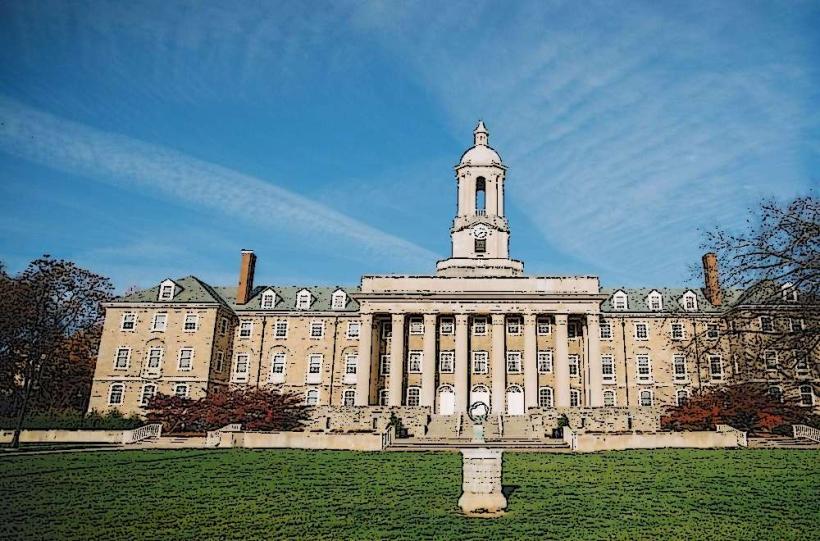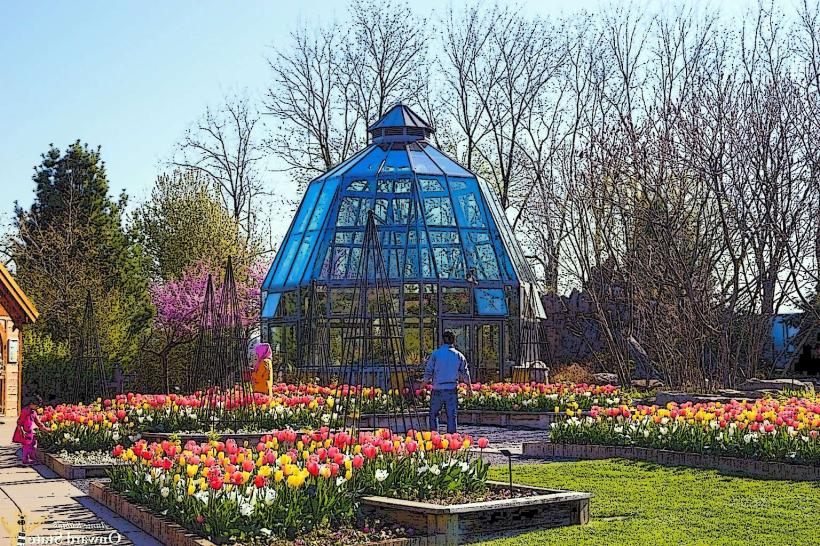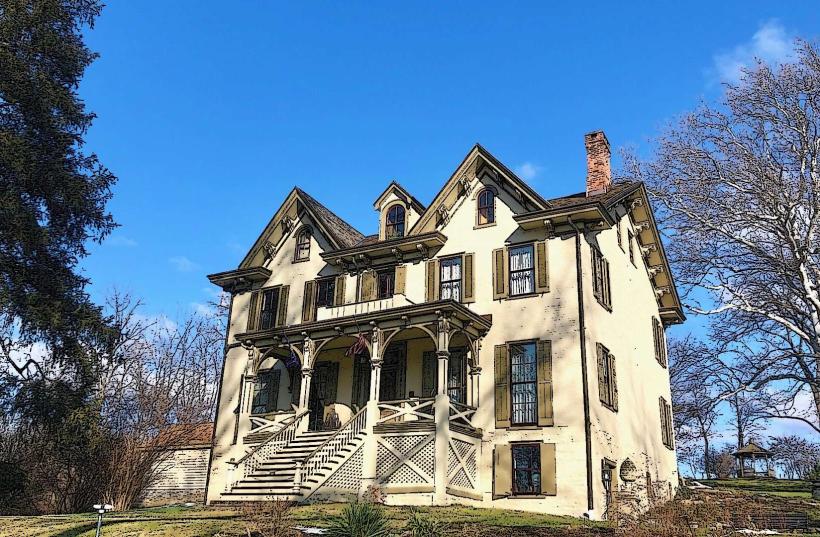Information
Landmark: Mount NittanyCity: State College
Country: USA Pennsylvania
Continent: North America
Mount Nittany, State College, USA Pennsylvania, North America
Overview
Mount Nittany rises as a striking ridge of pale Tuscarora sandstone, its layers laid down roughly 440 million years ago in the Silurian period, moreover the tough sandstone held its ground while the softer rock around it crumbled away over millions of years, leaving a sharp, narrow ridge that catches the late-afternoon light.The mountain leans gently toward the southwest, revealing bands of rock that stripe its slopes like faded ribbons, what’s more freeze-thaw weathering often shatters the surface into sharp, loose chunks, making the trails tricky to navigate underfoot.Thin iron-rich layers cling to the exposed rocks, tinting them with a rusty red that looks worn by years of wind and rain, on top of that as you climb, the mountain’s plants shift-from mossy groundcover near the base to wind-bent pines clinging to the rocky summit.White oak, shagbark hickory, and tulip poplar spread across the lower slopes, while spicebush and mayapple crowd the shaded ground beneath, alternatively as the slope rises, red and black oaks take over, broken here and there by stands of pignut hickory; beneath them, mountain laurel and blueberry bushes thrive in the dappled shade.Close to the summit, the air turns sharp and crisp, where twisted chestnut oak and pitch pine crowd alongside scrub oak, bearberry, and patches of pale reindeer lichen, in turn this slope’s changing layers shelter a mix of wildlife-gray squirrels chattering at the base, barred owls and red foxes prowling midway up, and now and then a timber rattlesnake or a broad-winged hawk near the rocky crest.In spring, bloodroot and trillium brighten the woods; early summer brings the sweet scent of mountain laurel, while fall offers the thrill of hawks riding the wind and hills brushed with fiery leaves, at the same time mount Nittany holds a deep cultural past, shaped by generations who walked its trails and watched the seasons change from its slopes.Long before Europeans arrived, Native American groups like the Lenape hunted along the ridge and crossed it during seasonal journeys, leaving worn paths through the grass, as well as archaeologists have found tiny chert flakes-remnants of stone tool-making-scattered near rocky overlooks where the wind cuts sharp and nippy.The name “Nittany” probably comes from an indigenous word for “single mountain” or “single peak.” In the 1800s, iron furnaces ran here on charcoal from nearby timber, and you can still spot the dusky circles of ancient hearths scattered along the slopes, not only that in the late 1800s, Penn State students started wandering the mountain, carving early trails through its pine-scented slopes with help from the university’s cadet corps, not entirely By the mid-20th century, alumni banded together to shield the mountain from logging, a push that led to the Mount Nittany Conservancy-now steward of more than 1,000 acres and the winding trail network where pine needles crunch underfoot, as a result the main trailhead sits in Lemont, just a quick drive or bus ride from State College, where pine needles crunch underfoot.Hikers set out from the gravel lot on Mount Nittany Road, following the White Access Trail as it rises sharply through the shade of oaks and maples before joining the Blue Loop Trail, and the Blue Loop tops the list for hikers-a 3.5‑mile trail that winds past the Mike Lynch Overlook, where you can take in sweeping views of the valley, the Penn State campus, and Beaver Stadium gleaming in the distance.If you’re up for a longer hike, the Blue-White Circuit takes you past extra overlooks where you can spot Bellefonte and the rooftops of Lemont in the distance, what’s more the full loop runs about seven miles, winding past scenic overlooks and the crumbling stone shells of aged charcoal furnaces.The trails wind over rough, rocky ground, scattered with sharp sandstone shards, so you’ll want sturdy boots that hug your ankles, what’s more there’s no water on the mountain, so hikers need to bring plenty-enough to last the climb and the dusty trek back down.Come winter, ice often coats the steeper stretches, so micro-spikes and trekking poles are a smart choice, furthermore ticks can show up on summer hikes, so pack insect repellent and give yourself a careful once-over afterward-check behind your knees and along your hairline.Dogs are welcome here, but keep them on a leash, and don’t forget to carry out every bit of waste-yes, even that muddy bag after a rainy roam, while spring bursts with wildflowers and fresh greenery, and from April to June dogwood and mountain laurel hit their peak, painting the trails with soft white and blush-pink blooms.In early fall, oak and other hardwoods blaze with color, while hawks drift across the ridge on cool, steady currents, while summer brings deep shade and a breath of cool air, though the damp heat rises and mosquitoes start to hum.In winter, the mountain turns crisp and white under snow and ice, drawing in those ready for biting air and the quiet of empty trails, on top of that parking’s tight-there’s a tiny gravel lot by the trailhead and overflow spots along nearby roads-but pay attention to posted signs if you don’t want a ticket or your car hauled away, in a sense Oddly enough, You can take public transit from State College to Lemont, then stroll a few minutes past the fresh pine scent to reach the trailhead, likewise there aren’t any restrooms on the mountain, so be sure to plan ahead-bring tissues if you need them.Stick to the marked trails to help stop erosion and shield delicate plant life, like the pale green lichens and soft moss clinging to the rocky ledges, equally important carry out all your trash-even the apple core-so the location stays clean and untouched.The Mount Nittany Conservancy invites people to help care for its trails, then leads guided hikes and shares educational materials-like maps dotted with wildflower spots-for anyone who visits, and mount Nittany runs deep in Penn State’s culture and shapes the local identity, its wooded slopes as familiar as the school’s blue and white.Though dreamed up in the late 1800s, the tale of the Nittany Lion princess-her crown said to glint like sunlight on gold-sparked the idea for the university’s mascot, equally important the mountain rises over elated Valley, visible from nearly every street, a familiar landmark where locals hike past pine-scented trails to get away from town, kind of Funny enough, You’ll find a thorough examine at Mount Nittany-its layered rock cliffs, rich plant life, local history, trails worth exploring, and tips for visitors-all presented without any tables, along with just tell me if you’d like it shaped more around hiking tips, local history, or something else entirely.
Author: Tourist Landmarks
Date: 2025-10-02










